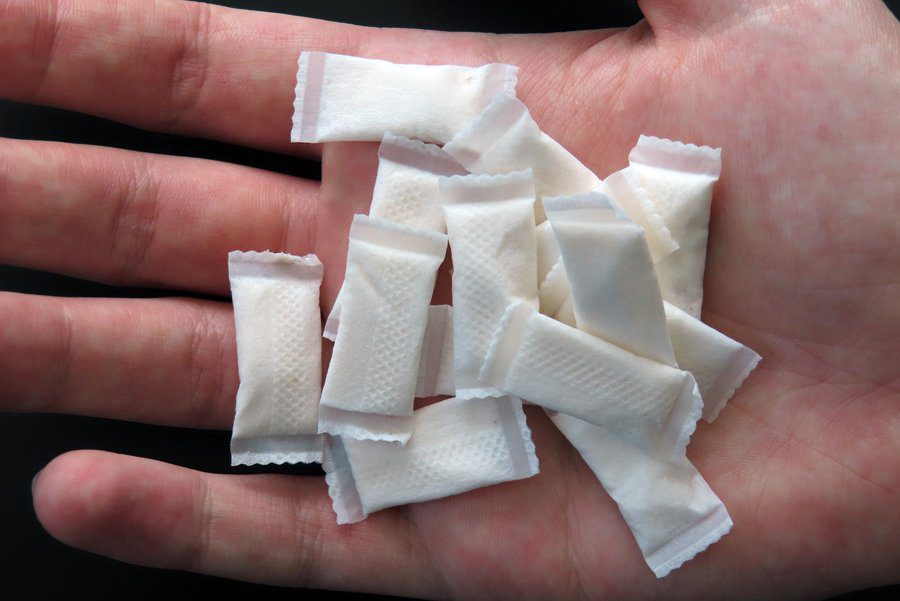What is the Process of Making Nicotine Pouches?

Nicotine is commonly obtained through smoking cigarettes or using vape products. However, both tobacco and vaping products can lead to serious health issues affecting the lungs, heart, and other vital organs. They also produce secondhand smoke and aerosols that can negatively impact those around you, potentially causing similar health problems.
To enjoy nicotine with fewer risks, many people are now opting for nicotine pouches.
Nicotine pouches are small packets filled with nicotine and various other ingredients, such as plant-based fillers, sweeteners, flavorings, and stabilizers. Since they do not contain tobacco, they are generally considered less harmful than smoking or vaping. Additionally, nicotine pouches do not involve combustion or vaporization, so they do not produce smoke or aerosols that could harm health.
Understanding the production of nicotine pouches can provide insight into why they are considered a safer alternative to traditional tobacco and vaping products.
How Are Nicotine Pouches Created?
Smokeless tobacco options like chewing tobacco, snuff, and snus are popular choices for those seeking alternatives to traditional cigars, cigarettes, and e-cigarettes. These products offer the benefit of discreet use, but each is processed differently.
Chewing tobacco comes in various forms, such as loose, braided, or compressed, and can be either spat out or swallowed. Snuff, which is finely ground tobacco, can be moist or dry and is typically sniffed or snorted. Snus, a type of smokeless tobacco, involves heating tobacco to eliminate bacteria that produce cancer-causing compounds.
Camel Snus, a well-known Swedish brand, is an example of snus available in Canada.
Nicotine pouches, while similar in use to smokeless tobacco products, differ significantly as they contain no tobacco. Users place a pouch between their gum and upper lip to consume nicotine, similar to how one would use chewing tobacco or snus. For those looking to quit tobacco, nicotine pouches are a preferable choice.
The absence of tobacco in nicotine pouches reduces the risk of health issues commonly associated with tobacco, such as mouth, throat, and pancreatic cancers, as well as gum disease and tooth loss.
Overall, nicotine pouches are manufactured in a way that delivers nicotine without the harmful effects of tobacco, offering a safer alternative for nicotine consumption.
Acquiring Nicotine for Pouches
The initial stage in crafting nicotine pouches involves sourcing nicotine.
Nicotine, a natural component of tobacco, is present in pouches even though they don’t contain tobacco. This is possible because manufacturers use various methods to obtain nicotine.
Some producers extract nicotine from tobacco through a solvent-based process, while others synthesize nicotine in labs by manipulating molecules to replicate the properties of tobacco. Both methods ensure that no actual tobacco leaves are included in the pouches, thereby avoiding the harmful effects associated with tobacco combustion or other forms of ingestion.


Nicotine pouches come in different strengths, and regardless of the level, they typically enhance alertness, reduce stress, and improve concentration. They can also elevate mood. However, it’s important to note that nicotine remains a dangerous substance, particularly when consumed in excess.
The stimulant effect of nicotine can lead to dependency, as users may seek to repeatedly experience the buzz or stimulation. Overuse can result in severe nicotine poisoning, so it’s crucial to monitor and regulate your intake of these pouches and other nicotine products.
Nicotine pouches are often used as a nicotine replacement therapy, helping individuals transition from tobacco products. They also serve as a harm reduction tool, potentially lessening the negative health impacts of smoking. Moderation is key to their safe use.
Incorporating Fillers
Once nicotine, the essential addictive component, is obtained, it is blended with various fillers.
One key filler is flavoring. These are food-grade additives that enhance the taste of nicotine pouches. Popular flavor categories include fruits, mint, desserts, and beverages.
To intensify the flavor, sweeteners may also be added to the mix.
Texturizers like microcrystalline cellulose are included to absorb and retain nicotine until the pouch is used.
Additional fillers may include hydrophilic solvents to stabilize moisture levels and sodium carbonate or bicarbonate to regulate the pH balance.
The production process involves mixing these ingredients with specialized equipment, followed by quality control measures before packaging.
With a limited range of ingredients, nicotine pouches offer a potential alternative for adult smokers, helping them manage their tobacco dependence while reducing exposure to harmful chemicals present in traditional cigarettes and other smoking products.
Adding Moisture to Nicotine Pouches
When crafting tobacco-free nicotine pouches, manufacturers employ unique formulations to ensure quality. While it’s possible to create your own nicotine pouches, it requires meticulous care.
Typically, nicotine pouch brands use water-based solutions to infuse moisture into the nicotine-containing material. They often incorporate stabilizers such as vegetable glycerin and propylene glycol, which not only enhance flavor but also maintain consistency and moisture within the pouches. These stabilizers help prevent the ingredients from drying out and disintegrating.
Fibers are also included in nicotine pouches to support proper moisture absorption and retention, provided they’re used in the correct quantities. Many pouches contain plant-based fibers, which contribute to their structure and texture while leveraging their natural ability to absorb and retain moisture.
The moisture content in nicotine pouches plays a crucial role in influencing nicotine delivery and flavor release. It also impacts the pouch’s longevity. Manufacturers may adjust moisture levels to control the speed of nicotine release—pouches with higher moisture levels tend to release nicotine and flavor more quickly but may lose flavor faster. In contrast, drier pouches usually offer a more prolonged experience with a steadier release of flavor and nicotine.
For example, ZYN nicotine pouches are designed with an optimal moisture level, allowing for a gradual and even release of both flavor and nicotine. They come in 6mg strength and are available in bundles of 5 or 10 different flavors.


Creating Nicotine Pouches
Nicotine pouches are crafted to fit snugly between the upper lip and gum without causing any bulging. These pouches are designed to be permeable, allowing both nicotine and flavors to be absorbed effectively by your body.
To achieve this, the pouches are made from specific materials. A commonly used material is non-woven fleece. This fabric is favored by manufacturers because it holds the pouch’s contents securely without tearing or degrading, and it also allows for effective permeability. Its flexibility allows manufacturers to adjust the pouch’s size easily.
Ensuring the pouch maintains its shape throughout use is crucial. Therefore, a gum base is added to the nicotine mix to reinforce the pouch’s structure.
Once the nicotine mixture is inserted into the pouch, a specialized machine seals the non-woven fleece. The pouch is then dried to achieve the ideal moisture level. During use, the pouch absorbs additional moisture from the saliva in your mouth. To prevent the content from becoming overly saturated, manufacturers carefully regulate the pouch’s moisture content.
Ensuring Quality Control in Nicotine Pouches
Maintaining quality is critical for nicotine products, including nicotine pouches. Countries like Canada enforce strict regulations to ensure these products meet high standards. Non-compliance with these regulations can lead to severe consequences, such as substantial fines, product recalls, market restrictions, and even the revocation of licenses.
To avoid these repercussions, nicotine pouch manufacturers implement rigorous quality control measures throughout the production process.
From the outset, they source ingredients with careful attention to purity and consistency, ensuring they meet the necessary quality standards set by regulatory bodies.
The manufacturing environment is meticulously maintained, with regular checks and maintenance of equipment and machines used in the production and packaging stages.
For the final product, manufacturers ensure that nicotine pouches deliver the correct nicotine strength, moisture content, and flavor profile. They also inspect the pouches to confirm they are free from foreign particles, contaminants, leaks, and defects.
Lastly, manufacturers review and align their products with regulatory standards to ensure full compliance.
A high-quality nicotine pouch should provide the appropriate nicotine dosage, and its taste and aroma should match its intended flavor. When used, it should deliver a satisfying experience, with both nicotine and flavors engaging the oral mucosa, offering a soothing effect for a specific duration.
Final Approval and Shipment
After passing quality control checks, nicotine pouches receive final approval for packaging and shipment. Typically, these pouches are enclosed in airtight, leak-proof cans designed to shield them from external elements and maintain their moisture levels.
Originally, these cans were made of tin, but many brands are now opting for plastic or biodegradable materials to enhance sustainability.
During the packaging process, manufacturers arrange the pouches uniformly within the can, often including desiccants or oxygen-absorbing packets to maintain optimal conditions.
The cans are then sealed with airtight lids to preserve the pouches’ freshness and effectiveness throughout their shelf life. Nicotine pouches generally remain effective for a year or more from their production date; if they expire sooner, it indicates a manufacturing issue.
Expired pouches may taste stale or fail to deliver the expected nicotine buzz.
Can designs may vary, with some being designed before or during the storage process. Regardless, cans are typically adorned with eye-catching designs to stand out in the market.
Labels on the packaging must include important information such as ingredients, nicotine concentration, and usage instructions.
Once packed, the nicotine pouches are shipped to retailers and wholesalers. To ensure quality, they are transported in climate-controlled trucks or containers and organized into cartons or pallets for efficient distribution.
Common Questions
Are Nicotine Pouches Harmful?
Nicotine pouches generally contain fewer chemicals compared to traditional tobacco products, making them a less harmful alternative. However, they may still contain tobacco-specific nitrosamines (TSNAs), which are known to be carcinogenic. Additionally, users might experience side effects such as hiccups, mouth irritation, and nausea.
Where Does the Nicotine in Nicotine Pouches Come From?
Nicotine in many pouches is derived from tobacco, either extracted directly from tobacco leaves or produced synthetically in laboratories to replicate the natural nicotine molecule.
Overview
Nicotine pouch manufacturers follow precise procedures to ensure their products are safe and effective. This includes sourcing quality ingredients, blending them correctly, and thorough quality control before packaging. Proper manufacturing minimizes risks and ensures a smooth user experience.
When using well-made nicotine pouches, you can enjoy a controlled nicotine experience discreetly, without the common irritations associated with smoking.
For top-quality nicotine pouches from various brands, visit Mohawk Smoke today.


